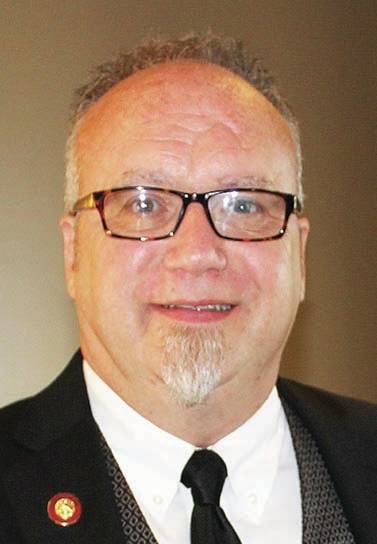Why ‘hate speech’ is, and should remain, constitutional
Published 6:00 am Thursday, September 28, 2017
Alexander Hamilton once wrote, “The sacred rights of mankind are not to be rummaged for, among old parchments, or musty records. They are written, as with a sun beam in the whole volume of human nature, by the hand of the divinity itself; and can never be erased or obscured by mortal power.”
One such is the First Amendment to the Bill of Rights, which in part says, “Congress shall make no law … abridging the freedom of speech.” Since neither the executive or judicial branches can make law, only Congress (Art. 1, Section 1), or in the case of the judiciary rule in such a way as to make law, the federal government can impose no restriction on speech and neither can the states as the 14th Amendment made the Bill of Rights applicable to them as well.
Under liberty, speech cannot be qualified by government into types of speech as good, bad, harmful or hateful. Segments of society cannot authorize government to forbid speech they disagree with. It is left to the individual to do it for himself by turning off the television, radio, Internet or not attending an event expected to have such and leaving it when it does. Peer pressure harnesses most unacceptable speech but moving from offensive speech can deal with the rest.
If government could qualify speech into types, levels of restriction would follow with anti-government speech listed as one of the first. The Founding Fathers were at the top of the list in prerevolutionary times, thus their obsession to forbid a place for government in speech. If government decides these things we are not free, as it will always decide in favor of enhancing itself.
Colleges and universities are places where intellectual debate should flourish and be encouraged. Learning requires the free flow of ideas. Viewpoint diversity, now absent in so many universities, is critical. Restricting viewpoint is tantamount to burning books in medieval times.
Student unrest in many universities last spring demonstrated what is becoming obvious; institutions of higher learning are becoming radicalized and project intolerance for anything but a liberal view. Too few permit conservative or libertarian speakers and far fewer constitutional speakers.
College is supposed to be a big tent housing all types of thinking so that the student can gravitate to what he thinks best after all sides are presented. Although everyone gives lip service to this statement, there still exists a preferred philosophy. Most colleges insist that they adhere to the idea of intellectual diversity, but the literature suggests otherwise, that the vast majority of colleges and universities are weighted in favor of one ideology and professors to one political party. Many political science textbooks acknowledge this. In my field it is rare when professors present more than the preferred philosophy.
There exists a consensus of what a “good education” consists. Students are immersed in race consciousness, feminism, multiculturalism, environmentalism, collectivism, globalism, political activism, class warfare, global warming, acceptance of sexual deviations as normal, and minimization of the importance of Christianity. The end product, the student, must come to accept the above script. It is also in virtually all textbooks. It’s not that any of these notions are bad, in and of themselves, but it is the nearly universal absence of the opposing view that is most troubling.
It is no wonder that in a just completed study of 1500 students; a majority felt that the First Amendment should not protect “hate speech” (which translates to speech they disagree with). In the geographically diverse survey covering college students from 49 states, John Villasenor found that “Freedom of expression is deeply imperiled on U.S. campuses. In fact, despite protestations to the contrary (often with statements like “we fully support the First Amendment, but…), freedom of expression is clearly not, in practice, available on many campuses, including many public campuses that have First Amendment obligations.”
As mentioned, to the question, “Does the First Amendment protect ‘hate speech’?” Most said no. This was so across all three political affiliations liberal, conservative and independent.
Other observations were noteworthy as well. Most, 62 percent of Democrats and 39 percent of Republicans also agreed that it was appropriate to shout down a controversial speaker to which they disagreed. With respect to the use of violence to shut down a speaker 20 percent of Democrats and 22 percent of Republicans agreed. Most incorrectly believed that the First Amendment required a presentation of a counter view. It does not. Worst yet, as college is supposed to be a place of competing view points, most also expected their institution to provide a learning environment that “shelters them from offensive views.” Nonsense! College is supposed to prepare students for the real world, which has no filters.
This is especially disconcerting as students today do not know the most rudimentary parts of the Constitution and the consequence of this ignorance is serious. As pointed out by the Villasenor Survey, “What happens on campuses often foreshadows broader societal trends. Today’s college students are tomorrow’s attorneys, teachers, professors, policymakers, legislators, and judges.”
“The sacred rights of mankind,” as expressed by Alexander Hamilton, in this instance freedom of speech, is not hidden in old parchment but is, “as with a sunbeam,” in the Constitution. It clearly denies government a function in addressing speech — even so-called “hate speech.”
To read more of Dr. Harold Pease’s weekly articles, visit www.LibertyUnderFire.org.







